Dance is a performance art form consisting of purposefully selected sequences of human movement. This movement has aesthetic and symbolic value, and is acknowledged as dance by performers and observers within a particular culture. Other forms of human movement are sometimes said to have a dance-like quality, including martial arts, gymnastics, figure skating, synchronized swimming and many other forms of athletics.
1. Hip-hop dance
Hip-hop dance refers to street dance styles primarily performed to hip-hop music or that have evolved as part of hip-hop culture. It includes a wide range of styles primarily breaking, locking, and popping which were created in the 1970s and made popular by dance crews in the United States. The television show Soul Train and the 1980s films Breakin’, Beat Street, and Wild Style showcased these crews and dance styles in their early stages; therefore, giving hip-hop mainstream exposure. The dance industry responded with a commercial, studio-based version of hip-hop—sometimes called “new style”—and a hip-hop influenced style of jazz dance called “jazz-funk”. Classically trained dancers developed these studio styles in order to choreograph from the hip-hop dances that were performed on the street. Because of this development, hip-hop dance is practiced in both dance studios and outdoor spaces.
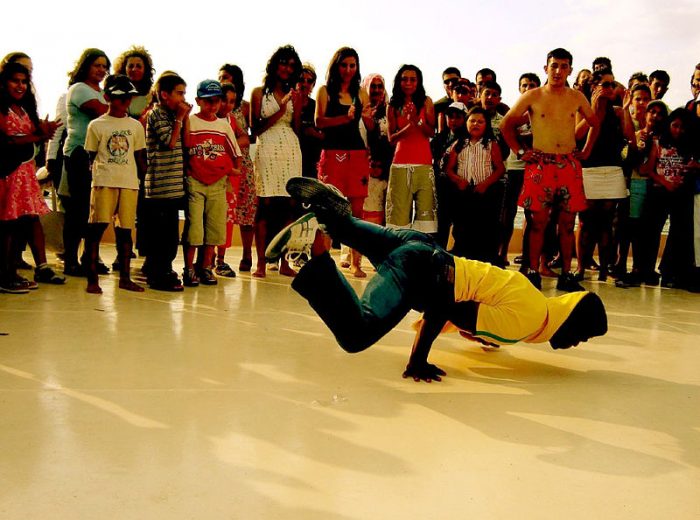
E. Başak /CC BY-SA 2.0 | Hip-hop Dance
2. Tap dance
Tap dance is a form of dance characterized by using the sounds of tap shoes striking the floor as a form of percussion. Two major variations on tap dance exist: rhythm (jazz) tap and Broadway tap. Broadway tap focuses on dance; it is widely performed in musical theater. Rhythm tap focuses on musicality, and practitioners consider themselves to be a part of the jazz tradition.
The sound is made by shoes that have a metal “tap” on the heel and toe. There are different brands of shoes which sometimes differ in the way they sound.
“Soft-Shoe” is a rhythm form of tap dancing that does not require special shoes, and though rhythm is generated by tapping of the feet, it also uses sliding of the feet (even sometimes using scattered sand on the stage to enhance the sound of sliding feet) more often than modern rhythm tap. It preceded what is currently considered to be modern tap, but has since declined in popularity.
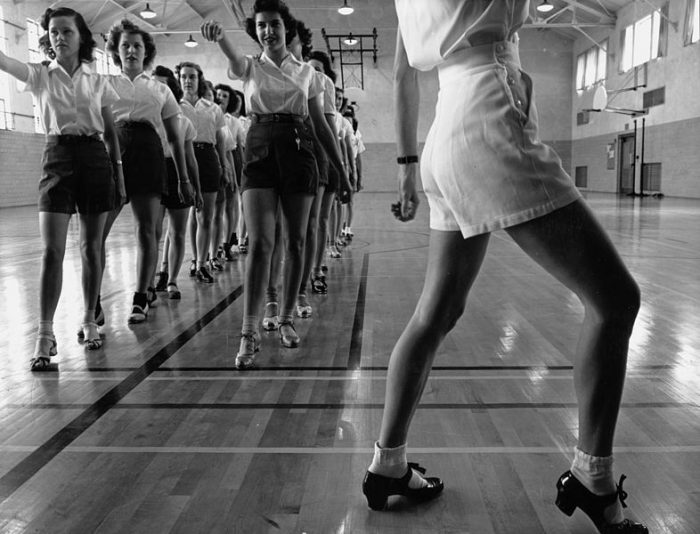
Jack Delano /Public Domain | Tap Dancing
3. Yangko Dance
Yangko drama, or Yangko opera (秧歌剧 pinyin Yangge-ju), is a form of Chinese sung theatre. An example is the founding piece of the China National Opera when it was founded in Yan’an in 1942, which was with a performance of a Yangko drama Brothers and Sisters Opening up the Wasteland (《兄妹开荒》). The Yangko owed something to normal huaju spoken drama, but with dance, and songs added. Yangko has changed since its inception and the one that we see now happens to come from the late 1940s.
Ans6) YANGKO DANCE#NavratriWithDoorMint pic.twitter.com/tJY0723NB5
— Aroon Rathore (@AroonRathore) October 17, 2015
4. Belly dance
Belly dance is an expressive dance which emphasizes complex movements of the torso. Originally a Middle Eastern folk dance, it has evolved to take many different forms depending on the country and region, both in costume and dance style. New styles have evolved in the West as its popularity has spread globally.
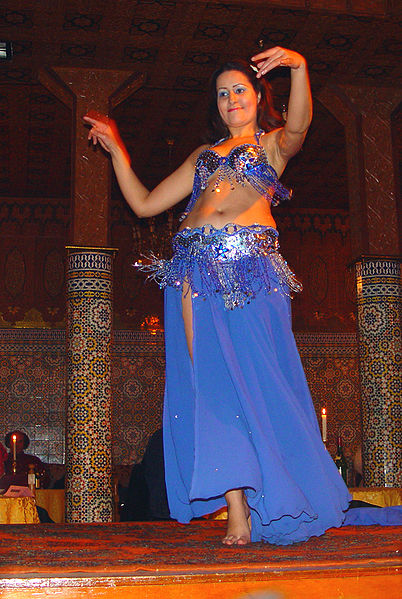
Etan J. Tal /CC BY 3.0 | Belly Dance
5. Kathak
Kathak (Sanskrit: कथक) is one of the ten major forms of Indian classical dance. The origin of Kathak is traditionally attributed to the traveling bards of ancient northern India, known as Kathakars or storytellers. The term Kathak is derived from the Vedic Sanskrit word Katha meaning “story”, and kathaka in Sanskrit means “he who tells a story”, or “to do with stories”. Wandering Kathakas communicated stories from the great epics and ancient mythology through dance, songs and music in a manner similar to early Greek theatre. Kathak evolved during the Bhakti movement, particularly by incorporating childhood and stories of Hindu god Krishna, as well as independently in the courts of north Indian kingdoms.
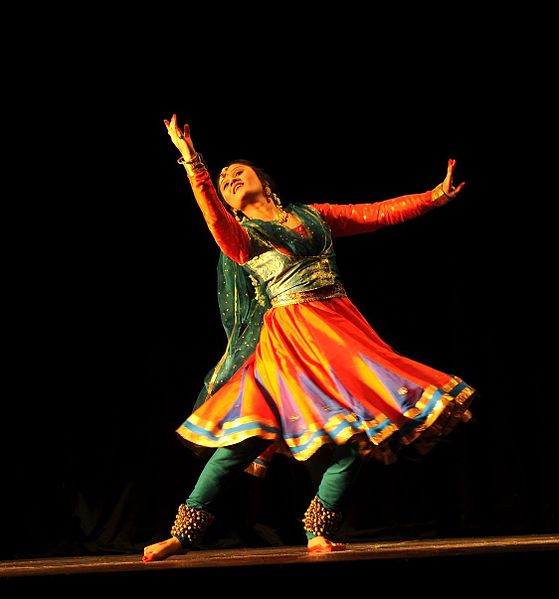
Atlantis7807 /CC BY-SA 4.0 | Kathak
6. Gangnam Style
“Gangnam Style” is the 18th K-pop single by the South Korean musician Psy. The song was released on July 15, 2012, as the lead single of his sixth studio album Psy 6 (Six Rules), Part 1, and debuted at number one on South Korea’s Gaon Chart. On December 21, 2012, “Gangnam Style” became the first YouTube video to reach one billion views. The song’s music video has been viewed over 2.66 billion times on YouTube, and has been YouTube’s most watched video since November 24, 2012, when it surpassed the music video for “Baby” by Justin Bieber.
7. Break Dance or B-boying
B-boying or breaking, also called breakdancing, is a style of street dance that originated primarily among Puerto Rican and African American youth, many former members of the Black Spades, the Young Spades, and the Baby Spades, during the mid 1970s. The dance spread worldwide due to popularity in the media, especially in regions such as Canada, France, Germany, Japan, Russia, South Korea and the United Kingdom. While diverse in the amount of variation available in the dance, b-boying consists of four kinds of movement: toprock, downrock, power moves, and freezes. B-boying is typically danced to hip-hop, funk music, and especially breakbeats, although modern trends allow for much wider varieties of music along certain ranges of tempo and beat patterns.
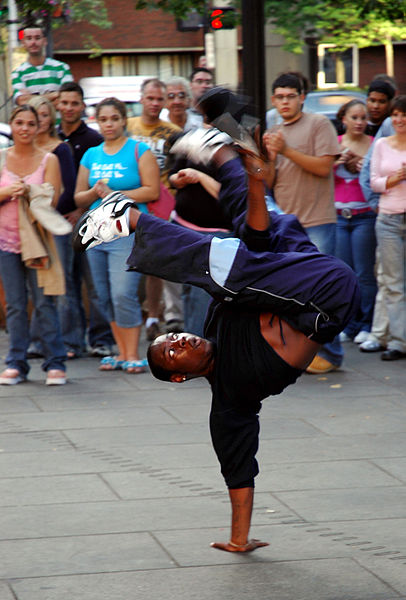
Chris Kirkman /CC BY 2.0 | B-boying or breaking
8. Ballet
Ballet is a type of performance dance that originated in the Italian Renaissance courts of the 15th century and later developed into a concert dance form in France and Russia. It has since become a widespread, highly technical form of dance with its own vocabulary based on French terminology. It has been globally influential and has defined the foundational techniques used in many other dance genres. Becoming a ballet dancer requires years of training. Ballet has been taught in various schools around the world, which have historically incorporated their own cultures to evolve the art.
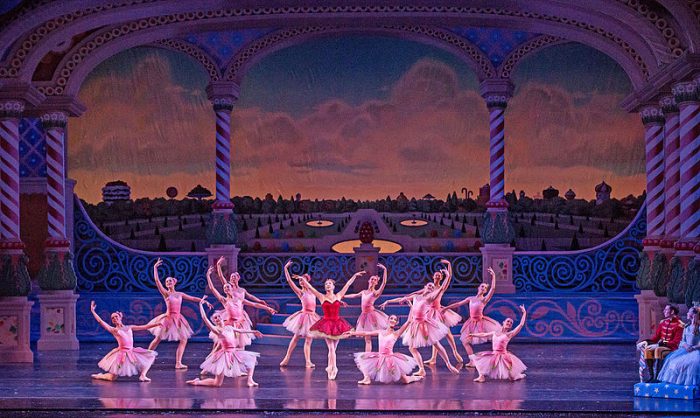
KCBalletMedia /CC BY 2.0 | Ballet
9. Salsa
Salsa is a popular form of social dance that originated in New York City with strong influences from Latin America, particularly Puerto Rico and Cuba. The movements of salsa have origins in Cuban Son, Cha-cha-cha, Mambo and other dance forms, and the dance, along with the salsa music, originated in the mid-1970s in New York.
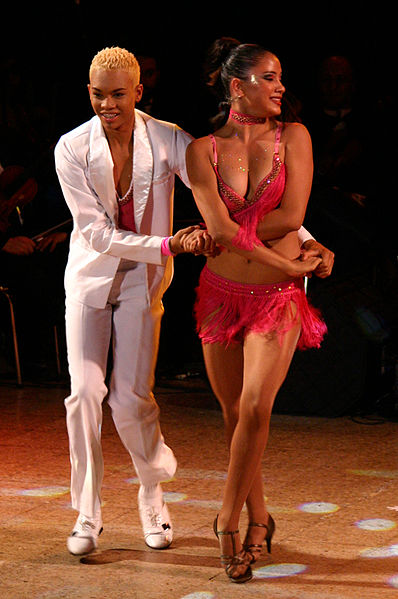
Hilcias Salazar /CC BY 2.0 | Salsa
10. Line dance
A line dance is a choreographed dance with a repeated sequence of steps in which a group of people dance in one or more lines or rows, all facing either each other or in the same direction, and executing the steps at the same time. Unlike circle dancing, line dancers are not in physical contact with each other.

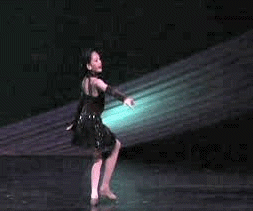
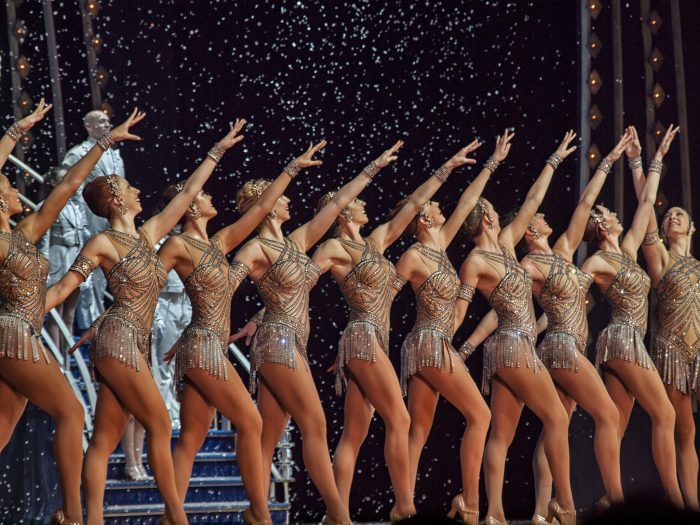

Connect with us